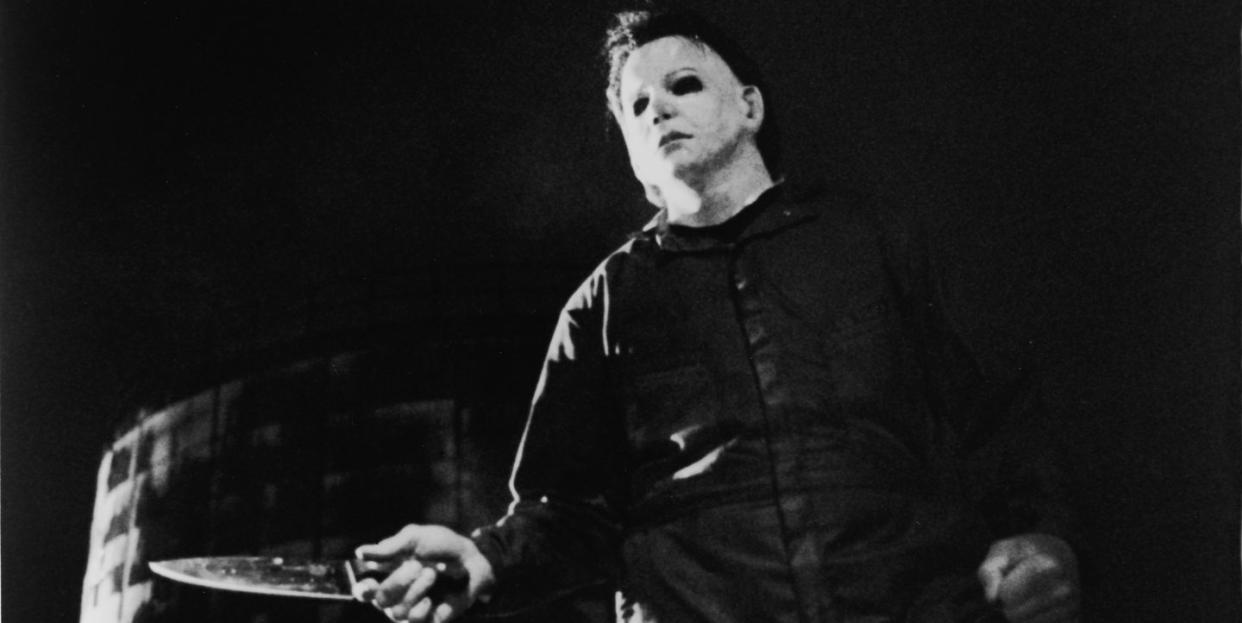The Untold Story of the Real Person Who Inspired Michael Myers in 'Halloween'

Michael Myers has been terrifying teen babysitters since the first Halloween film debuted in 1978. The masked killer stalks and knifes (and strangles, and drowns, and hangs and beats to death) residents of the fictional town of Haddonfield, Illinois, especially targeting high school students.
This month, the iconic character returns to the big screen in Halloween, a direct sequel to the original film of the same name and the eleventh installment in the Halloween franchise.
Myers has become one of the most recognizable masked killers in horror history, alongside villains like Ghostface in Scream, who was inspired by the real-life serial killer the "Gainesville Ripper," and Leatherface in The Texas Chainsaw Massacre, who was supposedly based on the "Butcher of Plainfield."
But is Myers's character similarly rooted in reality?
The original film's director and co-writer John Carpenter (who also co-wrote 1981's Halloween II with his writing and producing partner Debra Hill) says a creepy encounter he had while attending Western Kentucky University served as inspiration for the fictional serial killer.
"I had a class-psychology or something-and we visited a mental institution," he says in A Cut Above the Rest, a documentary on Halloween included on the Divimax DVD from 2003. "We visited the most serious, mentally ill patients. And there was this kid, he must have been 12 or 13 and he literally had this look." The look, says Carpenter, is best described by the lines he gave to Donald Pleasence, who played Myers's psychiatrist Dr. Sam Loomis in Halloween and four of its sequels, to describe Myers in the first film, below:
"This blank, pale emotionless face. Blackest eyes. The devil’s eyes. I spent eight years trying to reach him and then another seven trying to keep him locked up, because I realized what was living behind that boys’ eyes was purely and simply evil."
When Carpenter was approached by film producer Irwin Yablans with the idea to create a horror movie set on Halloween night "about babysitters stalked by this psychotic killer,” he thought back to the boy at the institution with the "real evil stare," Carpenter says in A Cut Above the Rest. "It was unsettling to me, it was like the creepiest thing I’d ever seen as a stranger.
"It was completely insane."

Multiple Halloween fan sites claim Myers could also, in part, be based on Stanley Stiers, who went on a killing spree in Iowa in the 1920s, even murdering his entire family on Halloween. But Esquire.com finds no evidence that Stiers actually existed.
Carpenter makes no mention of Stiers in In A Cut Above the Rest. He credits Yul Brynner's portrayal as a "killer robot that couldn't be killed" in the original 1973 Westworld film as additional inspiration for raising Michael Myers from just a character "to a mythic status."
"Make him human, yes, but almost like a force...that will never stop. That can’t be denied," Carpenter says in A Cut Above the Rest.
Carpenter says he and Yablans fleshed out the character over tuna fish sandwiches one day. They chose the name "Michael Myers" in honor of the European distributor of Carpenter's previous film, Assault on Precinct 13.
They agreed on a $320,000 budget and recruited young, then-unknown actress Jamie Lee Curtis-daughter of Psycho star Janet Leigh-to play high school student Laurie Strode.

Myers is portrayed by Nick Castle for most of the film, with Tony Moran and Tommy Lee Wallace taking over in some of the final scenes.
The film went on to gross $47,000,000 at the U.S. box office (today, takings are estimated to be over $150 million, per IMDb) and spawned a 10-film franchise. The 11th installment, directed by David Gordon Green and co-written by Eastbound and Down star Danny McBride, will hit theaters on October 19. The new film sees Curtis reprising her role as Laurie Strode, and it is a direct sequel to the original movie, bypassing the several sequels (including the three in which Curtis starred: 1981's Halloween II, 1998's Halloween: H20, and 2002's Halloween: Resurrection).
Carpenter has never revealed additional information on the boy he encountered in Kentucky all those years ago, but it didn't matter for the infamous character he inspired.
“Michael Myers hasn’t evolved as a character in any way, shape or form [since 1978]; he’s the essence of evil,” David Gordon Green told the L.A. Times. “He has no character. He has no personality. He has no interests. He never has. He’s someone that is moving forward and reacting to the world around him, but not with any sort of conscious objective. And how the world around him reacts to his behavior is where our story comes to life.”
('You Might Also Like',)